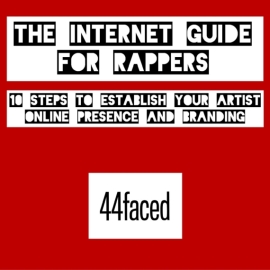Step 4. Write Your Artist Profile Statement

Based on your artist characterization,
create a profile statement that takes
everything you wrote, and summarizes it
in a short 1-2 sentence package.
Your artist profile statement should cover:
Who are you?
What do you do?
How are you unique?
Think of this as an elevator pitch.
If someone who doesn’t know you stands next to you
in an elevator, and asks you,
“What do you do?”
You need to explain that to him or her in up to 6 seconds.
Why do you need this statement?
You need it to help you in communication and networking.
When you speak with other people, it will
show confidence when you can sharply and confidently relay this statement.
This is useful in any life situation. Even outside of your artist-related scene.
people you come into contact with will always be asking you what you do,
and you’ll need to respond.
If you’ll be trying to get labels, investors, or other business possibilities in
developing your career as an artist,
this will be useful.
Moreover, be prepared to adjust this statement according
to the person or audience you’re speaking to.
For instance, how you speak to a fellow artist
is different to how you speak to a potential label
you’re interested in getting signed to.
These scenarios might appear to be natural.
That is, naturally you would speak one way or another
to different kinds of people.
But by taking the time to define how
each one of these audiences should optimally perceive you,
you can work to frame that perception in how you appear to them.
Your statement is an important first appearance in doing so.
It means that when you’re at a certain event, like a concert,
you can envision who you might meet,
and how you want to present yourself to them in advance,
and be better prepared for all kinds of encounters you can have.
It translates also into the virtual space.
If you simply copy/paste the same statement across all platforms you’re on,
then you’re missing the point.
Each one of those networks has
different audiences and expectations from the people who use them,
and you should speak according to the different atmosphere on each network.
Your profile statement is also the core unit of your bio,
which we will learn more about in Step 5.
You can also think of it as the first statement
at the top of your artist CV that you would
send to labels and investors.
Check out my Fiverr gig
I will send your song to 300+ hip hop/rap/RnB blogs for $5
The Internet Guide for Rappers – 10 Steps to Establish Your Artist’s Online Presence and Branding [eBook]
Get PDF Version Get Kindle Edition
Contents
Introduction
What is The Internet Guide for Rappers, and what will it give you?
Step 1. Choose Your Artist Name
A step-by-step process of scrutiny on your artist name: its strengths, weaknesses, what you can change, and what you can’t.
Step 2. Get Your Artist Name on All the Web Property You Can
A one-time task that will set the foundation of your artist name’s online real estate.
Step 3. Characterize Your Artist Profile
An essential process that will guide you to find what will make people want to become your loyal advocates.
Step 4. Write Your Artist Profile Statement
Frame the perception you want others to have of you as an artist in a 1-2 sentence zipped format.
Step 5. Write Your Artist Bio
How to put together a snapshot of your strengths, motivations and uniqueness as a rapper, including examples.
Step 6. Make Your Artist Photos
What kinds of photos you need to have of yourself, and tips for how to make yourself more photogenic.
Step 7. Create a Communication Plan
A guide for how to plan your networking in the upcoming 12 months in order to help you realize your goals, and also to open you up to new opportunities.
Step 8. Implement Your Communication Plan
A checklist for you to apply across all your communication channels to maximize the impression you make.
Step 9. Setup Your Artist Profile as an Extension of Your Personal Brand
The importance of differentiating your artist profile and your personal brand from the very beginning, and how to setup your artist profile as an extension of your personal brand.
Template 1: Artist Characterization Template
A guide to fill out your artist characterization, as described in “Step 3. Characterize Your Artist Profile.”
Template 2: Artist Bio Template
The must-have parts of every artist’s bio to help you write your bio comprehensively and quickly, as described in “Step 5. Write Your Artist Bio.”
Template 3: Communication Plan Example Template
One example of how a 12 month communication plan looks like, for you to apply to your own networking actions over the next 12 months, as described in “Step 7. Create a Communication Plan.”
Template 4: Communication Plan Checklist
Template of the communication plan checklist described in “Step 8. Implement Your Communication Plan” for you to apply across all your communication channels, to maximize the impression you make.
Warning: count(): Parameter must be an array or an object that implements Countable in /home/j4faugdg/public_html/wp-includes/class-wp-comment-query.php on line 405


![The Internet Guide for Rappers: 10 Steps to Establish Your Artist's Online Presence and Branding [eBook]](https://i1.wp.com/www.44faced.com/wp-content/uploads/2016/06/internet-guide-for-rappers_44faced_570.jpg?resize=570%2C570)

